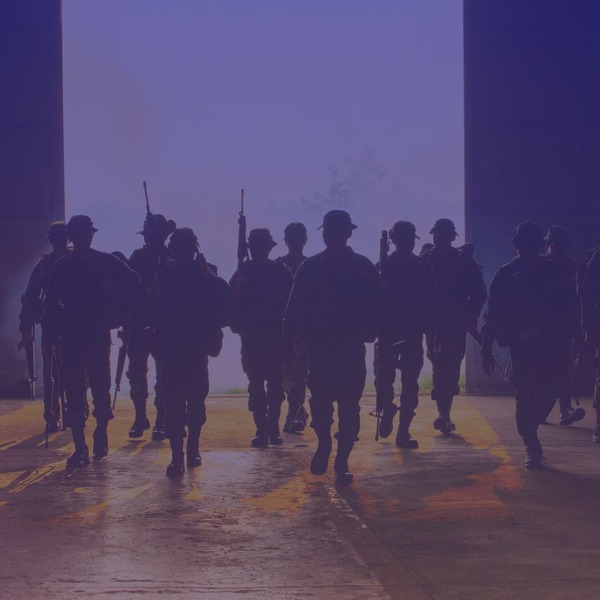By Pierre Barthelemy (translated from French by Chloe Giampaolo). Originally published on 2013/01/14
[Read the original article in French here]
For some time now there have been whisperings about the possibility of the disintegration of the European Union – a day rarely passes without it being discussed. Meanwhile, news of another union altogether, the merging of borders between Belarus, Kazakhstan and Russia, has gone almost without mention. Perhaps it is understandable that a union between 3 autocratic countries does not call for much attention. However, the latter of the three has been short on limelight throughout Eurasia since 1991, and is announcing a particularly ambitious project.
July 7th, 2010, Noursoultan Nazarbayev, the president of Kazakhstan since 1990; Alexandre Loukachenko, the Belarrusian leader since 1994; and the famous Russian Putin-Medvedev duo, are all working together towards the implementation of uniting their borders. The idea began in 2009, emerging out of the goal of harmonizing their border taxes, including a common border tax among these three countries, and common regulation for foreign trade. In short, the bare essentials that lie in creating a free-trade zone. For such a union to take place, they had to wait quietly in their seats until January 1st 2012. The union would also have the effect of rallying Minsk, Moscow and Astana within a single economic sphere.
The plan for a Eurasian Union will most probably not be limited to Belarus, Kazakhstan and Russia. Already, Kirghizstan and Tajikistan have claimed to be interested in the project, and Moscow courteously invited Moldavia to join as well. What is the common thread binding these countries? They each take part in the EURASEC, the Eurasian Economic Community. It enforces economic, industrial and financial cooperation between them, in which Armenia, Ukraine, and Uzbekistan also take part. In addition all countries concerned belong to the community for independent states, which was founded in 1991 following the ruins of the USSR, and are signatories of the CSTO – The Collective Security Treaty Organization.
Through the realization of this multitude of treaties and accords, one might perceive Vladimir Putin’s ambition in bringing together the necessary elements for such a plan to be put into action. Hereafter, Prime Minister Medvedev himself declared it would be possible as of 2015.
Is this the start of a newly constructed USSR? A statement immediately denying the idea was made by Putin, ensuring “it would be naïve to try and restore or copy something that is a thing of the past, meanwhile an integration based on new values and a new political foundation certainly responds to the needs of today”. However, according to Forbes, Putin wishes for his “Eurasian Union” to include the membership of all republics from the former USSR. This is risky and impossible. The fact that these three Baltic countries have only been part of the EU since 2004, coupled with Ukraine’s reluctance to join, and the lingering afterthoughts of a recent war with Georgia, make this Eurasian Union all the more distant from realization.
The IMF nonetheless established accounts of what this Eurasian Union would encompass. In 2011, by adding in the Baltic countries, the Union would have had a GDP of 2.56 billion dollars, and a population of 288 million. This is ridiculous, compared to the 17 billion dollars the EU produces and the 500 million inhabitants it is composed of.
Yet, the idea of a Eurasian Union possesses non-negotiable conditions. An immense area is at stake; it includes 33% of the world’s gas reserves, and ultimate control of the Arctic Ocean, the Black Sea, as well as the Caspian Sea. This would therefore give such a union full control over pipelines that carry gas and petroleum to all of Europe. Knowing that Russia produces a large part of Europe’s resources, expanding its territory would ultimately lead to Europe being unable to rely on other suppliers such as Turkey. In the end Russia would emerge from such a union stronger than ever.
Then, is the reincarnation of a new USSR under the supervision of the Russian leader at all possible? It would be quite surprising. Russia has always had a difficult time adapting its foreign policy to work with that of its neighbors. The Baltic States are in fact part of Europe, having Ukraine sandwiched between them. The five countries of central Asia proudly affirm their independence and neutrality, and even claim reconciliation with Turkey, while Caucasus is still mired in conflicts and quarrels. It is difficult, amidst all the differences, to replicate the tendencies of the EU, especially while knowing that the EU already struggles to please all of its differing constituents. It is inevitable that the Eurasian Union would encounter the same setbacks.
One thing is certain, however: the project of a Eurasian Union is far from being actualized, and the European Union still has some breathing room.
Disclaimer: This article was originally published as “The Eurasian Union: A Clossus in Construction” on November 18, 2012 on The Political Bouillon, EST cooperation partner.

 Is EU citizenship for sale – or for keeps? A critical analysis of the CJEU’s Golden Visa ruling.
Is EU citizenship for sale – or for keeps? A critical analysis of the CJEU’s Golden Visa ruling.  The European Union in Space: From exploration and innovation to security and autonomy
The European Union in Space: From exploration and innovation to security and autonomy  The Rise of the Right: The Threat Right-Wing Extremism Poses to Women and Feminist Efforts in Germany
The Rise of the Right: The Threat Right-Wing Extremism Poses to Women and Feminist Efforts in Germany  The silent shield – how special operations safeguard the global supply chain
The silent shield – how special operations safeguard the global supply chain 


